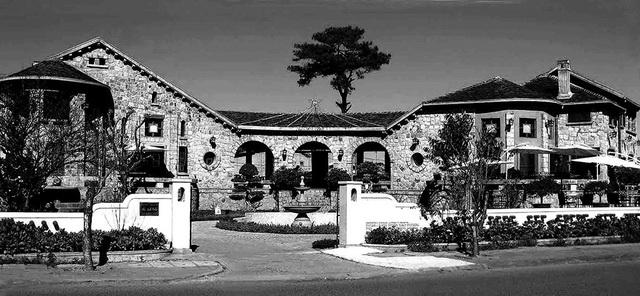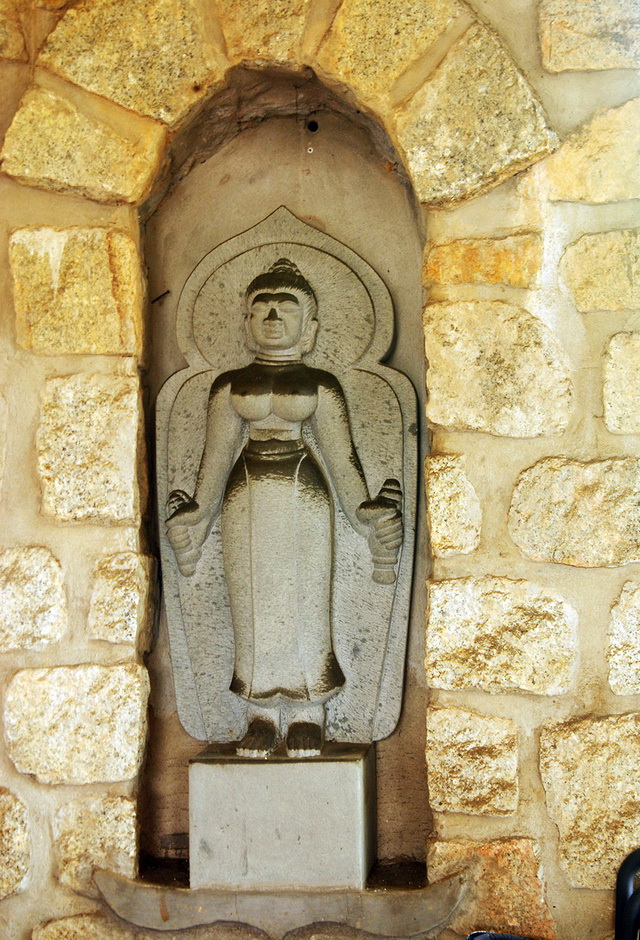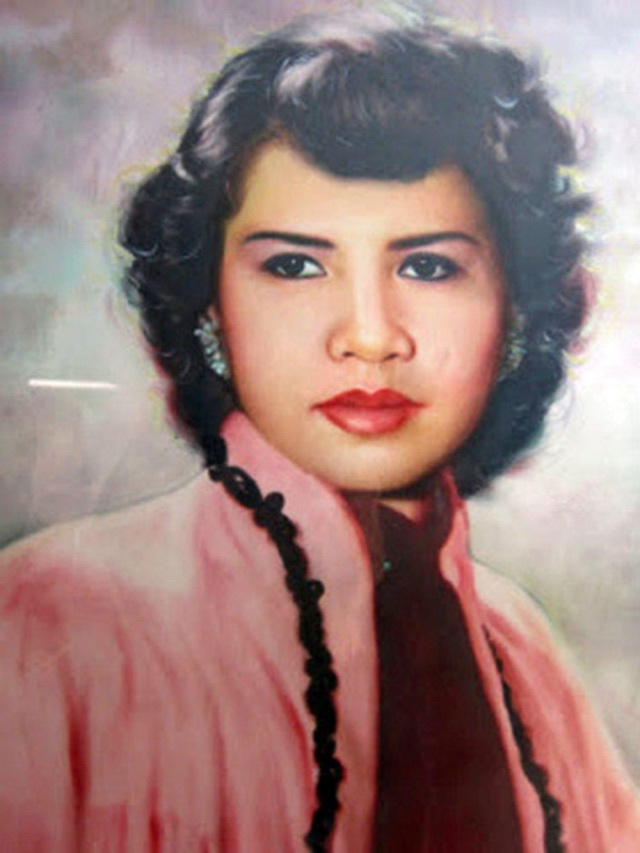The imposing stone villa in Da Lat that King Bao Dai, Vietnam’s last monarch, gifted to one of his concubines is a lasting reminder of the regal romance.
>> Untold stories of Da Lat – P1: Nguyen Dynasty’s trusted retainer
Apart from Queen Nam Phuong, his official wife, King Bao Dai (1913-1997), the 13th and last king of the Nguyen Dynasty (1802-1945), had several concubines and lovers.
Nguyen Dynasty is also the country’s last monarchy reign.
Da Lat is an appealing resort town and the capital of Lam Dong Province in the Central Highlands.
A singular paramour
Following his abdication in August 1945, Bao Dai was sent back to Vietnam by the French government in April 1949.
After receiving the news about Bao Dai’s return to Vietnam and stay in Da Lat in 1949, Phan Van Giao, governor of the central region, picked him up at the town’s Lien Khuong Airport and introduced a young woman named Le Thi Phi Anh to him.
Anh, 12 years younger than Bao Dai, was the youngest of an opulent, well-educated family who owned many villas in Hue City, the country’s then capital.
Her uncle was Le Quang Thiet, a son-in-law of King Thanh Thai (1879 –1954), the 10th Nguyen King.
According to Nguyen Dac Xuan, a veteran expert in Hue culture, Anh was a great beauty with glowing complexion, a high nose bridge and glittery eyes.
Her attractiveness actually outshined Bao Dai’s three other concubines, Xuan added.
In one of his lowest moments, the former monarch instantly fell for Anh.
Following their love-making session, Bao Dai somehow gave Anh a generous sum in return for her ‘service.’
As one of Anh’s relatives later revealed, the lady slapped him in his face for offending her.
To Bao Dai’s astonishment, Anh explained she “yearned to become the emperor’s concubine, not a prostitute.”
The former king was not enraged but adored his mistress more dearly.
Anh bore Bao Dai a daughter and a son, researcher Xuan added.
Their daughter, Nguyen Phuoc Phuong Minh, was born in 1950 and passed away in the U.S. in 2012.
Their son, Nguyen Phuoc Bao An, was born in 1951 in Da Lat.
After 1975, Anh spent her final years in loneliness in Saigon, or Ho Chi Minh City now, and passed away in 1986 at the age of 61.
 |
| The stone villa at the moment when Bao Dai purchased it and gifted it to Anh. |
The unique stone villa
Bao Dai purchased a stone villa, tucked away on René Robin Street (Quang Trung Street, Ward 9 now) in Da Lat City in 1950 as a gift to his beloved Anh.
The mansion, known as Phi Anh Villa, was built by French architects in 1928 and adopted Spanish architecture, according to the Da Lat Housing Management Center.
Unlike other villas, the edifice is located on a medium-size area and built mostly from dressed stones.
It has spacious corridors and large doors designed as arches that allow draughts to breeze through the rooms.
Statues of dancing women and 12 double-sided reliefs were displayed around the edifice, including four featuring stylized lotuses and heads of two uncommon birds.
Several oil portraits of Bao Dai and Anh occupied prominent positions around the mansion.
Dang Nguyen Van Tich, director of the Da Lat Housing Management Center, revealed that around 30 families were allowed to live at Phi Anh Villa after 1975.
The improper use and overloading as more than 100 people crammed into the space, which was designed for a single family, left the building in dilapidation.
An investor later relocated the households at their own expense and hired experts who helped restore the villa to its original state.
The edifice was brought back to life after being handed over to investors for tourism services.
Following several ownership transferral instances, the villa now contains Phu Dong Restaurant, owned by Nguyen Trong Phuong, an entrepreneur from Hanoi.
Phuong made it a point to keep the mansion’s original architectural traits intact, particularly its shape and construction material that made it unique.
He confessed that he had taken a close look at many age-old villas in Da Lat before deciding to purchase Phi Anh Villa.
“The romance between former monarch Bao Dai and Phi Anh, his concubine, was a decisive factor in my purchase,” he affirmed.
He recalled when he took the mansion over, he sensed pervasive cold air.
“The villa is only alive with warmth from its inhabitants. I realized then the villa could not be closed for a single day,” Phuong noted, implying the enduring memory of Bao Dai and his royal mistress has made Phi Anh Villa stand out from hundreds of others in Da Lat.
During his lifetime, architect Nguyen Van Lap, former chair of the Lam Dong Architecture Association, observed Phi Anh Villa was prominent among approximately 170 century-old villas across Da Lat.
Regarding uniqueness, Phi Anh Villa, despite its considerably smaller size, is considered on a par with the resort town’s four hallmark French-influenced structures, namely Da Lat Rail Station, Con Ga (Rooster) Church, Pedagogical College of Da Lat (previously Grand Lycée Yersin) and Da Lat Map Enterprise (known as the National Geographical Department prior to 1975).
In his recent paper, researcher Nguyen Hong Tran disclosed that after Bao Dai was ousted by Prime Minister Ngo Dinh Diem (1901 – 1963) in 1955, his concubine Phi Anh and their two children had nowhere to seek shelter and were driven out even by her own relatives.
The mother and her children were constantly on the move and lived in rented houses.
Anh had no choice but to remarry to have her burden relieved.
Bao Dai and Anh’s children also led miserable lives just as their mother did.
 |
| A well-preserved relief displayed inside Phi Anh Villa in Da Lat. Photo: Tuoi Tre |
|
Caring for lovers Just like with Phi Anh, former king Bao Dai always cared for his royal concubines and mistresses when they moved with him to Da Lat City. He gave Bui Mong Diep, another of his concubines, a stately villa on Graffeuille Street, near the Hung Vuong and Hoang Hoa Tham junction in Ward 10 now. Furthermore, he took Jenny Woong, also known as Hoang Tieu Lan or Tran Ny, his attractive Chinese paramour, to Da Lat and bought her a luxury villa nestled at No. 3, Babey Street (Nguyen Du Street today). Bao Dai, whose real name is Nguyen Phuc Vinh Thuy, was enthroned in 1926. He then returned to France to resume his studies and did not officially begin his reign until 1932. The king handed over his reign’s sword of power and seal to a Vietnamese revolutionary delegation at 1:00 pm on August 30, 1945. After several more political activities following his abdication, at 40, he started living in exile in France until passing away in Paris in 1997. |
Like us on Facebook or follow us on Twitter to get the latest news about Vietnam!




















































